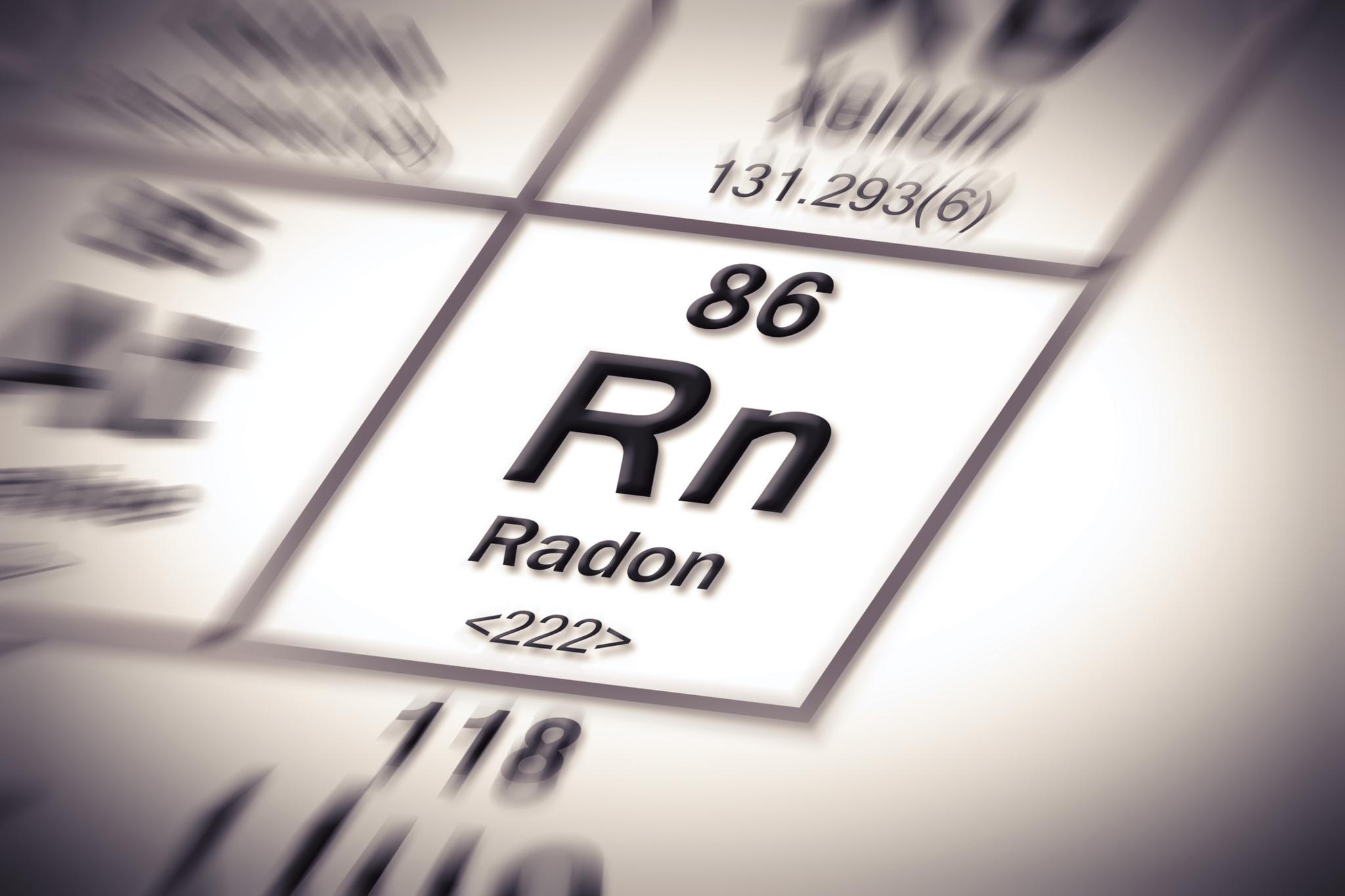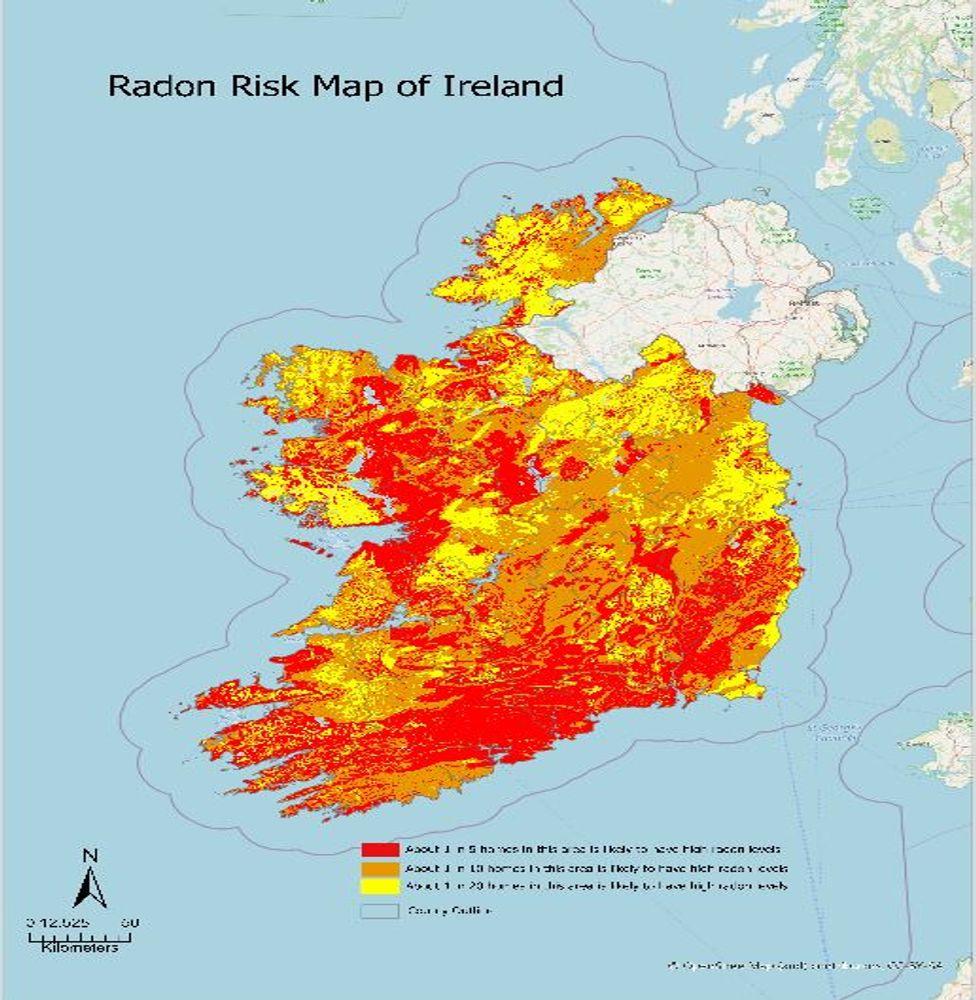Up to 170,000 Irish homes at radon risk

At a glance
As many as 170,000 homes in Ireland are now at risk of radon - a cancer-causing gas linked to lung cancer
That figure has risen from 45,000 from previous estimates carried out in 2002
The Environmental Protection Agency is launching new radon maps which show areas at risk
It is urging people to test their homes
- Published
The number of homes in Ireland at risk from radon is significantly higher than previously thought, the Environmental Protection Agency (EPA) has warned.
Radon is a cancer-causing gas linked to 250 new lung cancers each year.
The EPA is launching new radon maps, external which predict as many as 170,000 homes are now at risk.
That is up from 45,000 homes in previous estimates 20 years ago.
An EPA spokesman told RTÉ Morning Ireland, that almost 500,000 Irish citizens are living in houses that could potentially be at risk of having radon.
What is radon?
Radon is a colourless, odourless, and tasteless, naturally-occurring radioactive gas.
It is released by the decay of uranium in rocks and soils.
If we breathe enough of it in over a long period of time, it can damage DNA in our lungs and increase our risk of lung cancer.
It is linked to 350 new cases of lung cancer per year, external, with smokers especially at far greater risk.

An updated radon risk map has been developed for Ireland for the first time in 20 years.
The updating work was carried out by the Geological Society of Ireland, the Economic and Social Research Institute (ESRI) and the EPA, in collaboration with Trinity College.
It shows the 170,000 homes in Ireland are located in high-radon locations and could be at risk from this radioactive gas.
The map shows Munster and Connaught in particular are at increased risk, with high radon levels likely in as many as one in five homes in much of these regions.
The EPA is urging people to test their homes for radon, saying this is the only way to protect families from this cancer-causing gas.
EPA Director Micheál Lehane said: "Radon is a serious public health hazard.
"The new maps combine thousands of radon measurements, with detailed geological information, and are a significant revision of the previous map from 2002.
"More importantly, the new maps make it easy for everyone to find out the radon risk in their local area using the eircode search on the EPA website".
The EPA points out that employers in high-radon areas have a responsibility and are legally obliged to test their workplaces to ensure employees are protected from exposure to this radioactive gas.
By law, all schools in high radon areas must also be tested.
At present there is no legal requirement for landlords to test their rented homes for radon or to reduce it if the levels are high.
Yvonne Mullooly, of the Health and Safety Authority (HSA), said: "The new maps enable employers to clearly identify where they are legally obliged to test, so allows for targeting of resources in the areas where the risk from radon is highest.
"The HSA will continue to support employers by providing information, and through our online risk assessment BeSMART tool www.BeSMART.ie, external."
The EPA said radon testing is simple and inexpensive and, where necessary, reducing high radon levels in a building is also straightforward.
A radon test involves the placing of two radon detectors, one in a bedroom and the other in a living room.
The detectors are left in place for at least three months because of significant day-to-day variations in radon levels.